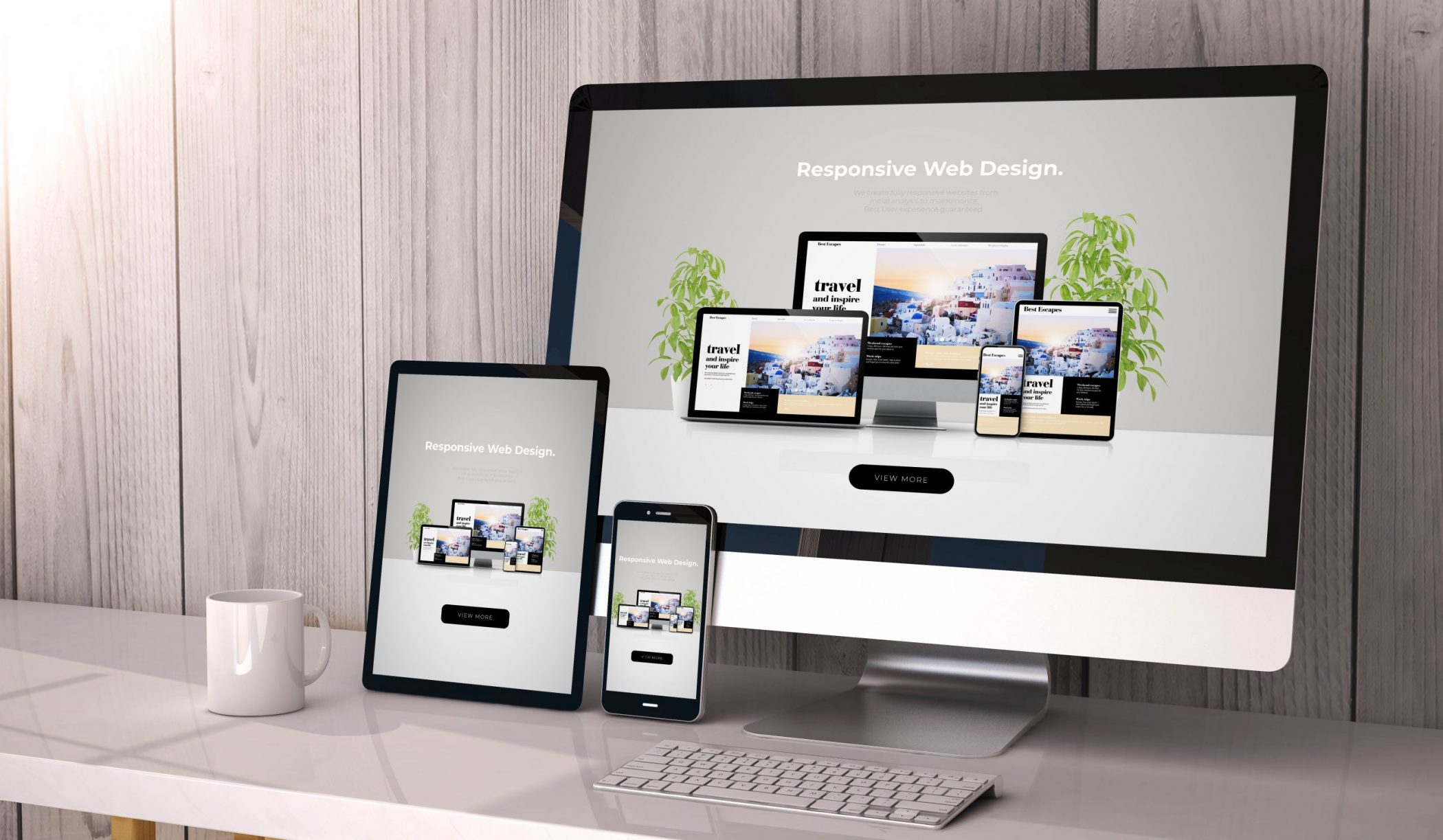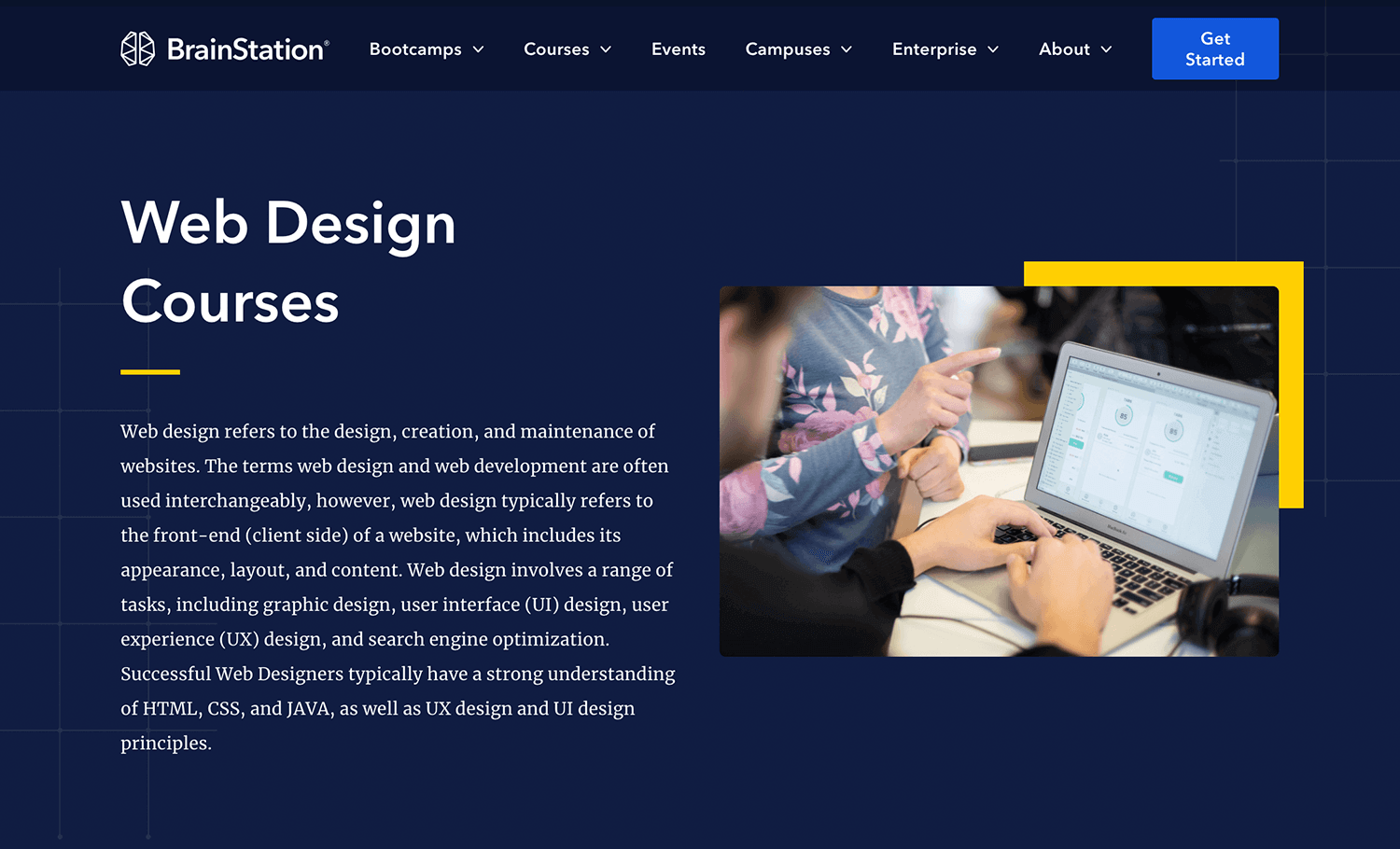Exactly How to Effectively Integrate Appearances and Performance in Website Design
When making a web site, you need to strike a balance between aesthetics and capability. It's not just concerning looking excellent; your layout should likewise offer a purpose and guide individuals effectively. By concentrating on simpleness and user-friendly navigation, you can develop an appealing experience. But what aspects really improve usability while keeping visual allure? Let's discover the crucial concepts that can bring about a harmonious blend of appeal and function.
Understanding the Relevance of Visual Appeals and Capability
Comprehending the equilibrium between appearances and performance is important for creating a reliable customer experience when you make a site. An aesthetically attractive website grabs interest, but it's the capability that maintains customers involved. If your site looks wonderful however is challenging to browse, site visitors will rapidly lose interest and leave.Consider your target market and what draws them in. You want to produce a style that mirrors your brand name while ensuring convenience of use. Structured layouts, user-friendly navigation, and clear phone calls to activity can boost both looks and capability.

Concepts of Effective Web Style
To develop a reliable web style, you need to adhere to a number of vital principles that improve both user experience and visual allure. First, focus on simplicity; a clean layout assists individuals browse quickly. Make use of a constant shade scheme and typography to keep comprehensibility throughout your website. This cultivates familiarity and trust.Next, guarantee your style is responsive. Customers access sites on numerous devices, so your style must adjust perfectly. Take notice of visual hierarchy; highlight crucial components with color, size, or placement to direct customers' focus.Finally, incorporate adequate white area. It avoids clutter and makes material a lot more digestible. Bear in mind, effective web style balances looks and capability, so every layout option should offer a function. By following these concepts, you'll produce a website that's not just visually appealing yet likewise user-friendly, inevitably maintaining site visitors involved and urging them to return.
Focusing On Individual Experience
When prioritizing user experience, you'll intend to start by recognizing what your customers truly require. Simplifying navigation layout can make a big distinction in just how quickly they discover what they're seeking. Additionally, enhancing visual hierarchy assists guide their interest to the most essential elements on your site.
Recognizing User Requirements
Recognizing individual needs is necessary for creating an interesting internet experience that maintains site visitors coming back. To attain this, you must determine the goals and choices of your target market. Beginning by carrying out user research study, like meetings or surveys, to gather understandings on what individuals value most. Take note of their discomfort factors and challenges when communicating with similar internet sites. This information allows you to customize your layout, ensuring capability lines up with individual expectations. In addition, take into consideration creating customer personas that stand for various sections of your target market, aiding you envision their requirements during the style process. When you focus on recognizing user requirements, you create a web site that not only looks terrific yet additionally provides a smooth, satisfying experience that cultivates commitment.
Streamlining Navigation Style

Enhancing Visual Pecking Order
A strong aesthetic hierarchy is important in directing users through your web site and ensuring they engage with key content. To achieve this, utilize color, spacing, and size purposefully. Make crucial components like headings bigger and bolder than body text, drawing attention immediately. Utilize contrasting colors to highlight telephone calls to activity, encouraging clicks. In addition, utilize ample white room to different areas, making content digestible and inviting.Consider the circulation of info; prepare components practically, leading individuals' eyes from one factor to the next. Usage aesthetic signs, like lines or arrows, to guide interest. By focusing on visual pecking order, you improve individual experience and enhance the likelihood of conversions, ensuring your web site is both cosmetically pleasing and functionally effective.
Shade Theory and Its Influence on Functionality
While picking the best shades for your internet site may look like a minor detail, it significantly affects functionality and individual experience. Shade impacts exactly how individuals regard info and can hinder or improve navigating. Contrasting shades can aid vital elements stand out, making it less complicated for visitors to find what they need.Additionally, think about the psychology of colors: blue often influences trust fund, while red produces urgency. Knowing your target market can lead your shade choices, guaranteeing they resonate well.Moreover, constant color design aid construct brand identity, making your web site much more memorable. Be careful-- as well several shades can bewilder customers. Stick to a limited combination that complements your web content and preserves clarity.Incorporating access is also essential; confirm your shade mixes are friendly for those with visual problems. By thoughtfully applying shade concept, you'll enhance usability and produce a more appealing user experience.
Typography: Balancing Style and Readability
Color choices established the phase for your site, but typography plays an equally important function in improving user experience. You desire your message to communicate plainly while also showing your brand name's individuality. Start by choosing look at this website fonts that are not just eye-catching yet additionally understandable. Sans-serif typefaces often work well for digital displays, as they're simpler to review at numerous sizes.Maintain a hierarchy by utilizing various font sizes and weights; this guides customers via your web content easily. Take into consideration line spacing and letter spacing; as well tight can irritate viewers, while too loosened can interrupt the circulation. Limitation your typeface choices to two or three to keep the style cohesive.Finally, always test your typography across various tools and web browsers. What looks great on one display may out another. Balancing design with readability assurances that your message resonates, keeping your audience involved and educated.
Responsive Design: Making Looks Function on All Gadgets
To assure your site looks terrific on any device, you'll need to embrace receptive layout concepts. This method assurances your website adapts to various display dimensions, giving an excellent customer experience. Start by using fluid grids and adaptable pictures that scale effortlessly. Rather than dealt with measurements, select percentages and family member systems, permitting your layout to adjust dynamically.Next, carry out media inquiries in your CSS. These let you apply different styles based upon tool qualities, like display size. In this manner, you can preserve aesthetic allure while assuring functionality.Don' t forget touch targets; make particular switches and web links are simple to touch on smaller sized displays. Focus on vital material, so customers can quickly browse your website regardless of their tool. By focusing on these components, you'll create an engaging, visually appealing experience that meets the requirements of all individuals, whether they get on a smart device, desktop, or tablet computer .
Performing Functionality Screening for Continuous Renovation
To boost your internet layout, you require to set clear functionality objectives that straighten with individual requirements. By carrying out user examinations, you can collect important feedback on how genuine people communicate with your site. Evaluating these outcomes will certainly aid you make educated enhancements and produce a much more reliable customer experience.
Defining Usability Goals
While looks can attract individuals in, defining usability objectives is essential for guaranteeing their experience remains smooth and gratifying. Begin by recognizing what you want individuals to accomplish on your site (website design london Ontario). Consider their tasks, behaviors, and requirements. Are they looking for information, purchasing, or registering for a newsletter? Establish clear standards to measure success, like job conclusion prices or time on task. Prioritize user-friendly navigating, easily accessible material, and responsive style to boost usability. Frequently revisit these objectives as user expectations advance. By defining functionality goals, you develop a structure for reviewing and enhancing your internet site's efficiency. This emphasis on navigate here usability not only increases individual contentment yet additionally reinforces the general effectiveness of your design
Conducting Individual Tests
Carrying out user examinations is crucial for refining your site and ensuring it fulfills your target market's demands. Beginning by determining your target individuals and creating a test plan that outlines your objectives. Utilize a mix of qualitative and quantitative techniques, such as studies, interviews, and task-based observations, to gather extensive responses. Invite individuals to browse your site while you observe their communications and note any difficulties they experience. Urge open dialogue to catch their thoughts and feelings regarding the design and functionality. Maintain sessions brief and concentrated, guaranteeing you cover crucial areas without overwhelming customers. Finally, make certain to document all searchings for, as this details will be invaluable for making educated style choices that improve both aesthetic appeals and functionality.
Assessing Examination Results
Exactly how can you effectively evaluate the results of your use examinations to drive continual enhancement? Begin by classifying comments right into common motifs. Try to find patterns in customer actions that highlight discomfort factors or areas for improvement. Use measurable data, like job conclusion rates and time on task, to determine usability objectively. Don't fail to remember to think about qualitative insights from customer comments; they often expose underlying concerns that numbers can not reveal. Focus on one of the most impactful findings and produce actionable things for your design team. Remember, it has to do with repeating-- implement modifications, after that test once more. This cycle of screening, examining, and refining helps you equilibrium visual appeals and functionality, ensuring your web site fulfills individual needs effectively while keeping visual charm.
Often Asked Inquiries
Exactly how Do I Pick the Right Shade Combination for My Internet site?
To pick the right color combination for your web site, consider your brand's personality, target market, and psychological effect (website design london Ontario). Usage shade psychology, produce consistency, and warranty readability. Examination mixes to see what resonates ideal with visitors
What Devices Can Aid With Web Design Appearances and Functionality?
You can use tools like Adobe XD, Figma, and Sketch to enhance your website design's visual appeals and capability. These platforms offer instinctive user interfaces, partnership features, and pre-made layouts to streamline your innovative process and enhance your designs.
Exactly How Can I Integrate Animations Without Compromising Performance?
To integrate computer animations without jeopardizing performance, focus on subtle results that improve user experience. Usage CSS computer animations these details for smoother communications, guarantee quick lots times, and test on various devices to keep efficiency while including visual charm.
What Prevail Mistakes to Prevent in Web Design Aesthetics?
When making, prevent cluttered formats, bad shade options, and inconsistent typefaces. Don't neglect mobile responsiveness, as it can push away users. Confirm your style lines up with your brand, creating a smooth experience that involves site visitors effectively.
How Often Should I Update My Site's Style for Optimum Aesthetics?
You ought to update your web site's style every 1-2 years to stay on par with patterns and preserve suitable aesthetic appeals. On a regular basis renewing visuals helps engage site visitors and warranties your site continues to be easy to use and enticing. When you make a website, recognizing the equilibrium between visual appeals and functionality is necessary for developing an efficient user experience. To produce an effective internet design, you require to stick to a number of crucial principles that boost both user experience and visual appeal. Individuals accessibility web sites on numerous devices, so your layout ought to adapt effortlessly. When prioritizing individual experience, you'll desire to start by understanding what your users truly require. Start by carrying out individual research study, like interviews or surveys, to gather understandings on what individuals worth most.